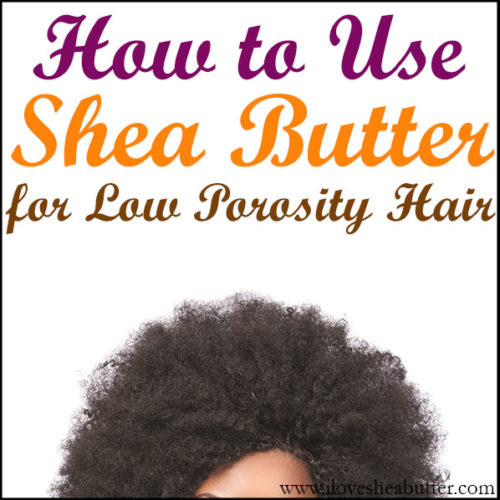When it comes to hair care, one frequently asked question circulates the beauty community: Is shea butter good for low porosity hair? This question is particularly pertinent for those with hair types that can feel more challenging to manage. With the right knowledge, the answer might just surprise you. Grab your favorite drink and let’s dive into the depths of shea butter and its compatibility with low porosity hair.
Understanding Low Porosity Hair
Low porosity hair is characterized by tightly compact cuticles, which make absorption of moisture more challenging. If your hair is resistant to hydration, it might feel dry or have build-up issues. On the flip side, low porosity hair can retain moisture quite well, meaning it also holds on to products. This can create a dilemma when choosing the right oils and creams for styling since not all products will perform equally.
So, where does shea butter fit into this picture? To understand its effects, we must first examine the unique properties of shea butter.
What is Shea Butter?
Sourced from the nuts of the African shea tree, shea butter is a natural fat known for its emollient properties. Rich in vitamins A and E, it is widely acclaimed for its ability to nourish and protect the skin and hair. Its creamy consistency offers a host of benefits, but for hair, the question remains: Is it suitable for low porosity strands?
Why Consider Shea Butter?
When assessing whether shea butter is advantageous for low porosity hair, one must consider several vital factors:
- Moisturization: Shea butter is an excellent moisturizer. Its high fat content helps seal in moisture, which can support the hydration of low porosity hair.
- Frizz Control: Many low porosity hair types struggle with frizz, especially in humid weather. The occlusive nature of shea butter can assist in taming those unruly strands.
- Heat Protection: If styling tools are used frequently, shea butter’s ability to coat the hair can offer a protective barrier against heat damage.
- Nutrient-Rich: The abundance of fatty acids, antioxidants, and anti-inflammatory properties found in shea butter can enhance the overall health of your hair.
The Challenge of Product Build-Up
While shea butter brings many benefits to the table, its thick consistency poses a challenge for low porosity hair. Here’s the playful challenge for you: test your knowledge of moisturizing products. Consider whether your hair can handle the richer textures without succumbing to that dreaded product build-up. For low porosity hair, it’s essential to strike a balance.
Here’s a suggestion: use shea butter sparingly. A little goes a long way, and finding the right amount to apply is crucial. Starting with a pea-sized amount can help you gauge your hair’s response without overwhelming it. If you notice your hair feels weighed down or greasy, scale back your use. On the other hand, if it drinks up the moisture, you might be onto something special!
How to Use Shea Butter for Low Porosity Hair
Curious about how to incorporate shea butter into your hair care regimen? Here are several effective techniques:
- Pre-Poo Treatment: Before shampooing, apply shea butter to your dry hair. This method can help prevent the drying effects of shampoo while enabling easier detangling.
- Deep Conditioning: Mixing shea butter with your favorite conditioner can enhance its moisturizing properties. Heat the mixture slightly to aid in absorption, then apply it, covering it with a plastic cap for approximately 30 minutes.
- Leave-In Conditioner: When diluted with a carrier oil or mixed into a lighter lotion, shea butter can serve effectively as a leave-in conditioner. Just ensure that the mixture is well-emulsified to avoid any greasy residue.
- Styling Cream: Apply shea butter to dry hair as you style it. It not only aids in moisture retention but also adds definition to curls or waves.
Frequency of Use
Now, you might be pondering: how often should I use shea butter? That’s another puzzle to solve. Observe your hair’s condition. Many low porosity hair types benefit from using shea butter once a week or every two weeks. Overusing it may lead to that frustrating build-up, which we all want to avoid.
Combining with Other Ingredients
If you feel bold and adventurous, mix shea butter with lighter oils—such as jojoba or grapeseed oil—to create a customizable hair potion. These lighter oils can assist in penetrating the hair shaft more effectively, making it a perfect companion to shea butter’s more substantial nature.
Common Misconceptions
There’s a prevalent misconception that low porosity hair should completely avoid heavy products like shea butter. This is only partially true. While heavier products require careful use, they can indeed work wonders if applied correctly. The secret lies in application methods and conditioning routines that prioritize moisture retention.
Final Thoughts
So, the ultimate question—Is shea butter good for low porosity hair? The answer seems to lean toward a resounding yes, albeit with a few caveats. As you embark on this hair care journey, take the time to experiment with shea butter while paying attention to how your hair responds. The key is to find a routine that nourishes your locks without overwhelming them. Are you ready to unlock the potential of shea butter for your hair? It’s time to challenge yourself and see results that may leave you pleasantly surprised!

